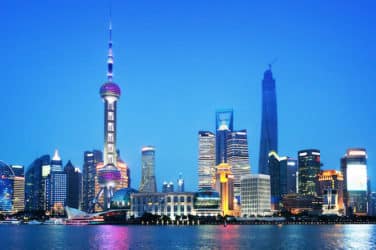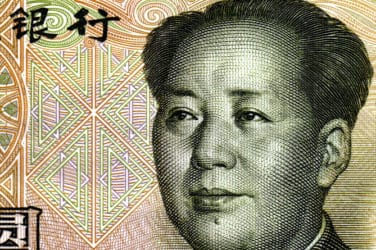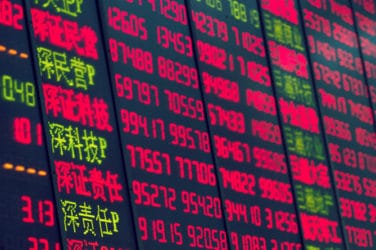

Global investors are returning to East Asia following a period of underperformance in equity markets, with Singapore Exchange (SGX Group) seeing a pickup in interest in its derivatives contracts that offer equity exposure in this region.
“China continues to be a vital market for the world’s investors, and appetite remains strong for trusted access to growth opportunities particularly in equities,” said Meiyan Ding, co-head of equity derivatives product management at SGX Group.
SGX Group partners with FTSE Russell, the index arm of London Stock Exchange Group, to provide a suite of index derivatives for single country and regional equity exposure in Asia. Of these, the SGX FTSE China A50 Index Futures and SGX FTSE Taiwan Index Futures are the most liquid international USD-denominated futures contracts, with about US$5bn traded daily.
Investors around the globe see China as one of the major economies where equity market valuation is still reasonably attractive, according to Emerald Yau, FTSE Russell’s head of equity index product management. Performance has been strong in recent months, particularly since the lows of Chinese equity markets in January this year.
“Last year, China was not the favorite child as equity performance was lagging due to concerns in the property sector and the slower-than-expected economic recovery after the end of zero-Covid policy,” Yau said.
China’s policymakers have also stressed the country’s transformation into a high-tech powerhouse, which has boosted technology and consumer discretionary companies, she added.
Investors can gain exposure to China equities through the two flagship SGX derivative contracts. The SGX FTSE China A50 Index Futures was launched in September 2006, tracking the largest 50 onshore A-shares and is the world’s most liquid international futures for Chinese equities, according to the exchange. The FTSE China A50 Index has gained 8.4% year-to-date through the end of May, and has a sizable exposure to banks and to consumer staples.
The SGX FTSE China H50 Index Futures contract, on the other hand, tracks the 50 largest Chinese stocks that are listed in Hong Kong, with higher concentration in technology names in the Communication Services and Consumer Discretionary sectors. The FTSE China 50 Index has gained 10.6% year-to-date through the end of May.
Clients can choose to express their sectoral views with these contracts because they cover a diverse range of companies, according to Ding.
“With the A50 and H50 contracts, we offer access to a comprehensive suite of domestically traded stalwarts as well as high-growth internet companies listed in Hong Kong. This enables investors to leverage on the vast potential of the different profiles and calibrates their exposure to different sectors,” she said.
Open interest in these derivatives has remained stable at about $12bn, despite the decline in the Chinese equity markets over the past two years. This indicates that China remains a significant part of global investors’ emerging market portfolios, with futures being actively used for hedging purposes. The contracts enable investors to adjust their risk exposure in response to new developments. In May, A50 open interest rose 13% month-on-month to 989k lots (US$12bn), the highest in 16 months.
In addition to risk management and portfolio rebalancing, SGX’s equity derivatives are deployed in a variety of trading strategies: traders can take spread positions between the two index futures, while hedge funds run market-neutral strategies where they own a basket of shares and then hedge using index futures.
“The average daily volume of SGX FTSE H50 Index Futures has more than doubled since the beginning of this year to surpass US$100m, as the valuation of Chinese stocks listed on Hong Kong becomes attractive to investors,” Ding said.
As investors turn cautiously optimistic about China economic prospects, they also recognize that geopolitical tensions between the US and China, particularly those arising from the upcoming US presidential election in November, may present significant risks. Policy uncertainties associated with the election could impact trade and economic policies between the two nations.
“FTSE has done a fantastic job to make sure their indices comply with US Executive Order to serve the benchmarking needs of their global clientele,” Ding added. Implications of external events that impact trading accessibility for investors – including imposed sanctions that restrict investment into foreign jurisdictions – are timely reviewed by FTSE Russell according to its relevant policy guides.
The index methodology has evolved over the years to meet the needs of international investors. For example, the FTSE China A50 index now accounts for foreign-ownership limits, excludes sanctioned stocks and the constituents have to be eligible for Northbound Stock Connect.
Investors are increasingly seeing China as a separate allocation because it is such a huge market, according to Yau. She gave the example of the Asian market evolving into Asia ex-Japan, and said China is heading in that direction. Passive assets under management tracking the FTSE China A50 Index and FTSE China Index have also remained relatively stable at about $4bn and $5bn, respectively, in recent years.
A key differentiator of SGX derivatives is the robust ecosystem that the exchange has built to provide round-the-clock liquidity. For example, it offers an overnight trading session in European and US time zones, when the underlying stock market is closed. International investors can react to news flow and adjust their positions ahead of the market opening the next day. Volumes of SGX FTSE China A50 Index Futures in the overnight session have grown at an annual compound rate of 17% to 35k lots (US$500m) over the last decade.
Taiwan
With the global tech rally, there is also growing interest in Taiwan given its pivotal role in the semiconductor industry, Ding observed. “We are seeing significant growth in the SGX FTSE Taiwan Index Futures product, with open interest rising 47% to $8bn in the last two years,” she said.
Taiwan is home to large established technology manufacturers, such as TSMC, one of the most advanced semiconductor manufacturers in the world, which is benefitting from the growth in artificial intelligence.
Before 2016, TSMC was less than 20% of the FTSE Taiwan Index, but the rapid growth of its market cap over the past 10 years have resulted in the company making up approximately 45% among Taiwan’s large- and mid-cap stocks. The SGX futures on the FTSE Taiwan RIC Capped index includes a capping methodology, which limits the single-stock concentration to below 20% at each rebalance. As a result, TSMC makes up 19.3% as of the March index review, which is more manageable for investors from a risk perspective.
“FTSE Russell’s wide range of China and Taiwan equity index offering allows us to service different investor demand – be it sector exposure preference or capping preference,” Yau noted.
The SGX FTSE Taiwan futures offer the opportunity to trade around earnings releases of semiconductor companies or AI companies even when the local Taiwanese stock market is closed, according to Ding.
On April 19, following TSMC’s first-quarter earnings release, the contract achieved a record single-day non-roll volume of 147,000 lots (US$9.6bn). Additionally, it reached a three-year high in monthly volume in April, with 1.9m lots traded.
The CFTC-approved SGX FTSE Taiwan Index Futures is the dominant USD-denominated instrument. “Our institutional investors prefer a venue where they can trade a multitude of products, risk-manage across all their Asian exposure and benefit from high liquidity,” Ding said.
Managing investments in Asia necessitates a multi-asset hedging strategy due to the region’s diverse economic landscape and market dynamics. Investors must navigate various risks, including currency fluctuations, equity market volatility, and commodity price swings.
SGX provides a single venue that supports trading across equities, FX and commodities. Investors can efficiently hedge their positions, optimize their portfolio performance, and capitalize on the opportunities presented by the interconnectedness of Asian markets.
“There are still quite a number of funds that are looking for Asian access,” Ding said. “We are happy to be there to provide them the right contract.”







